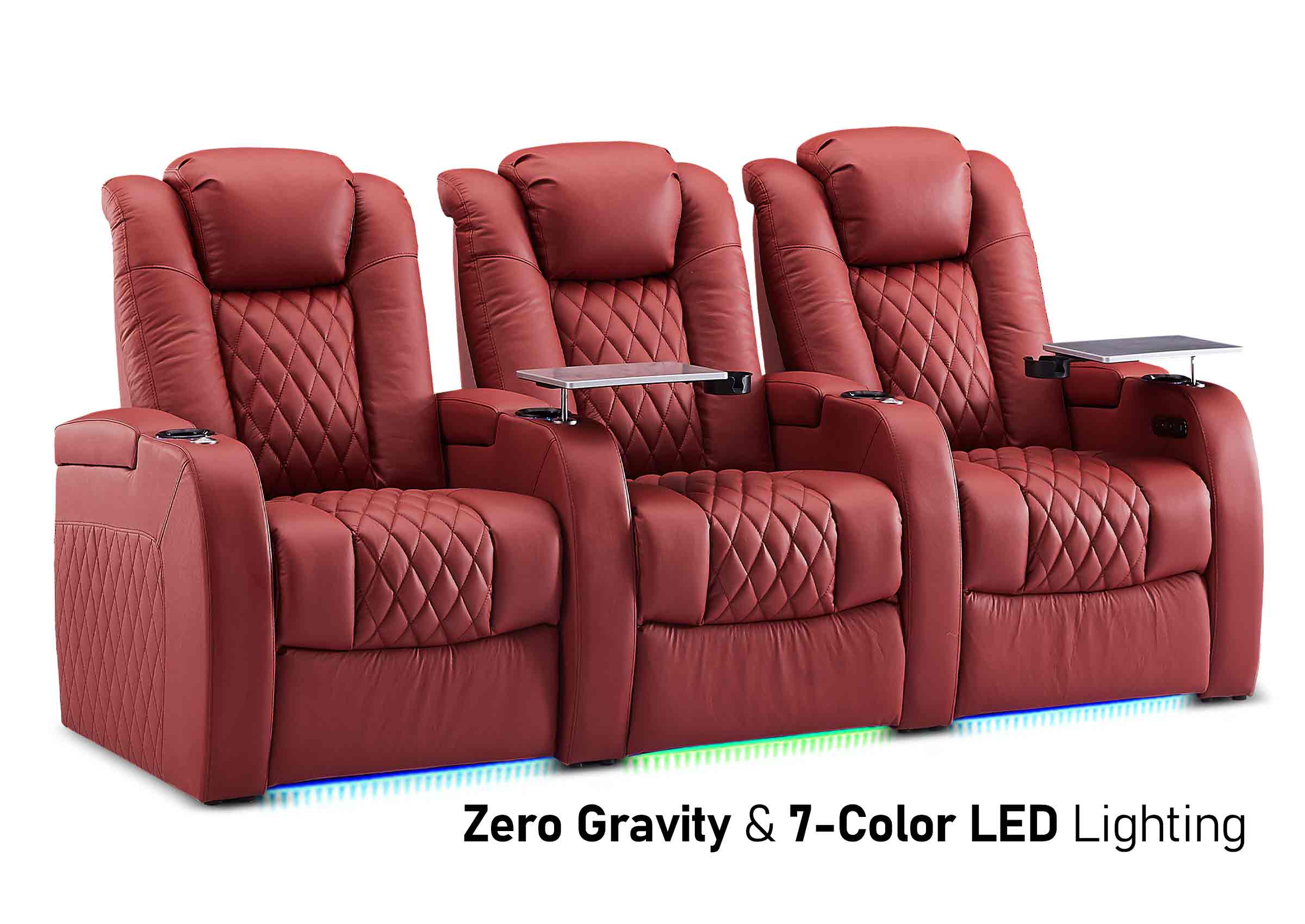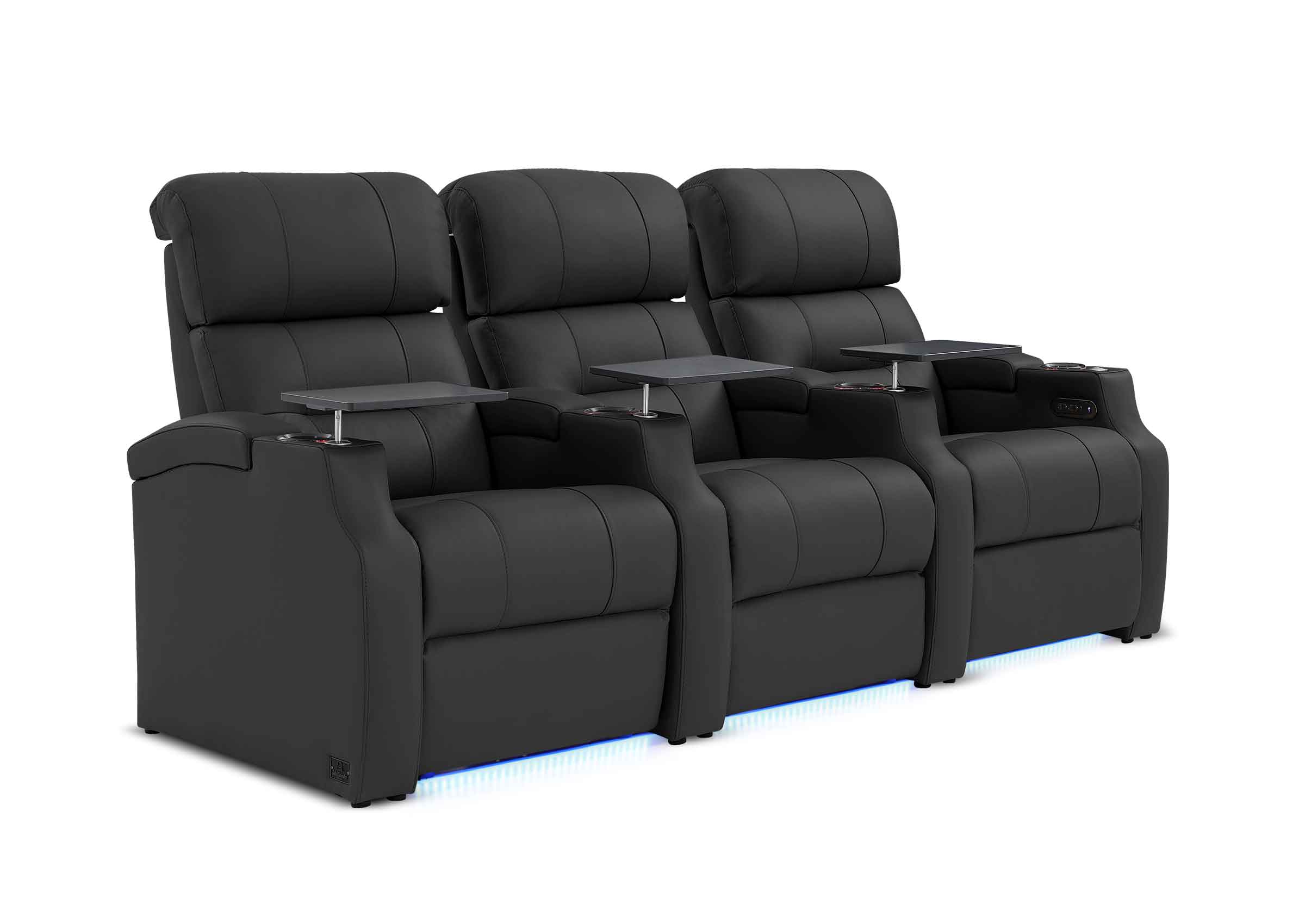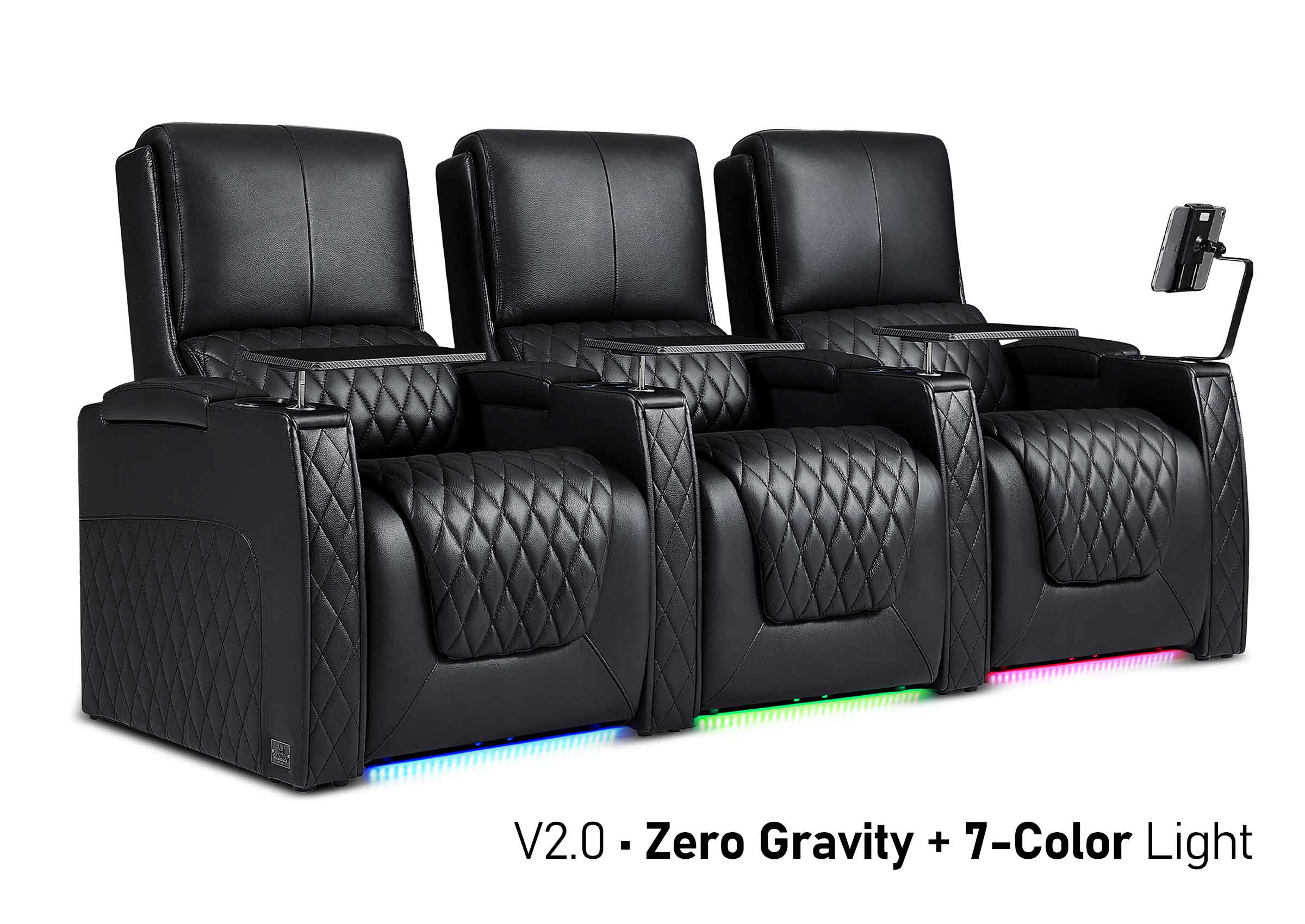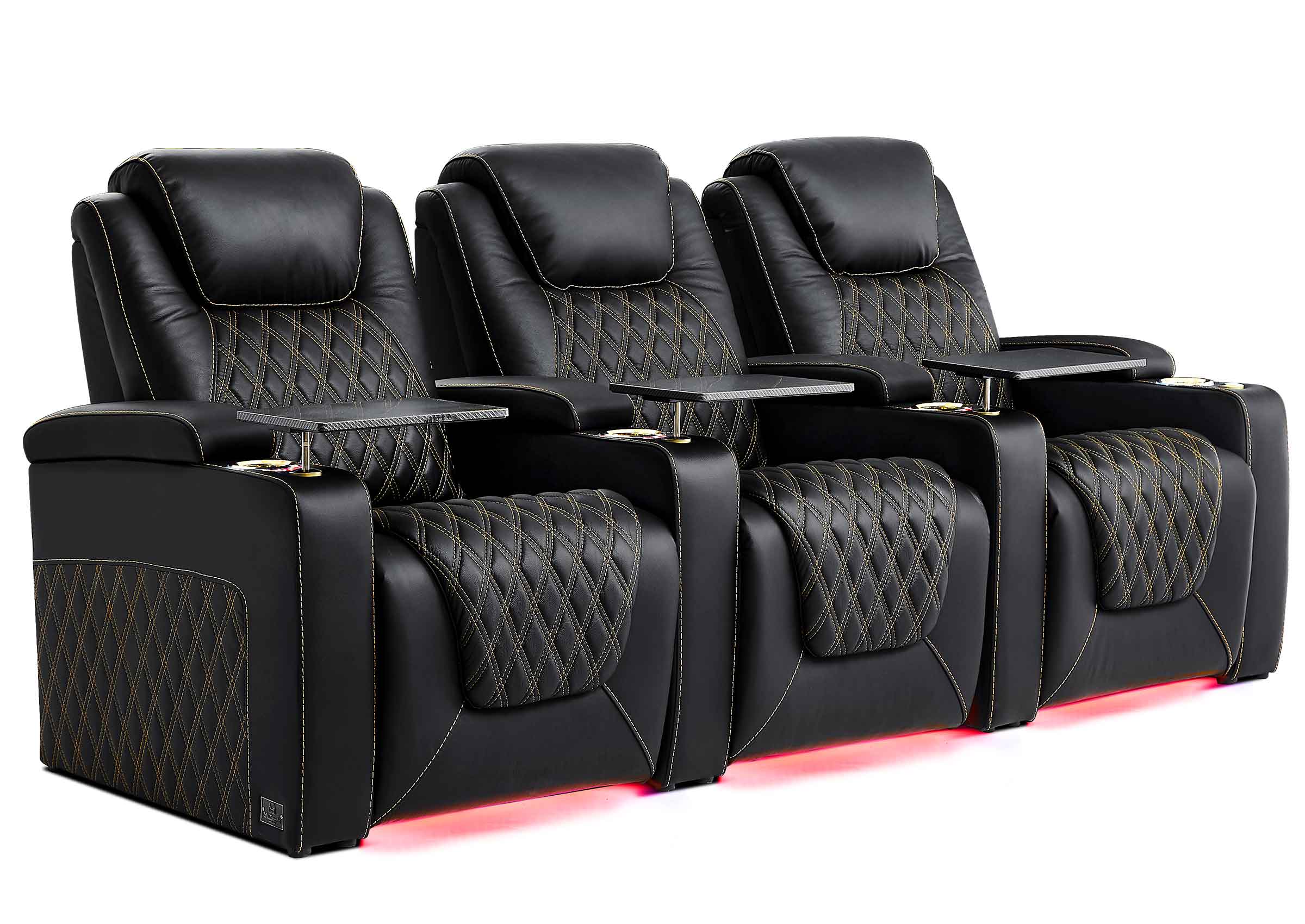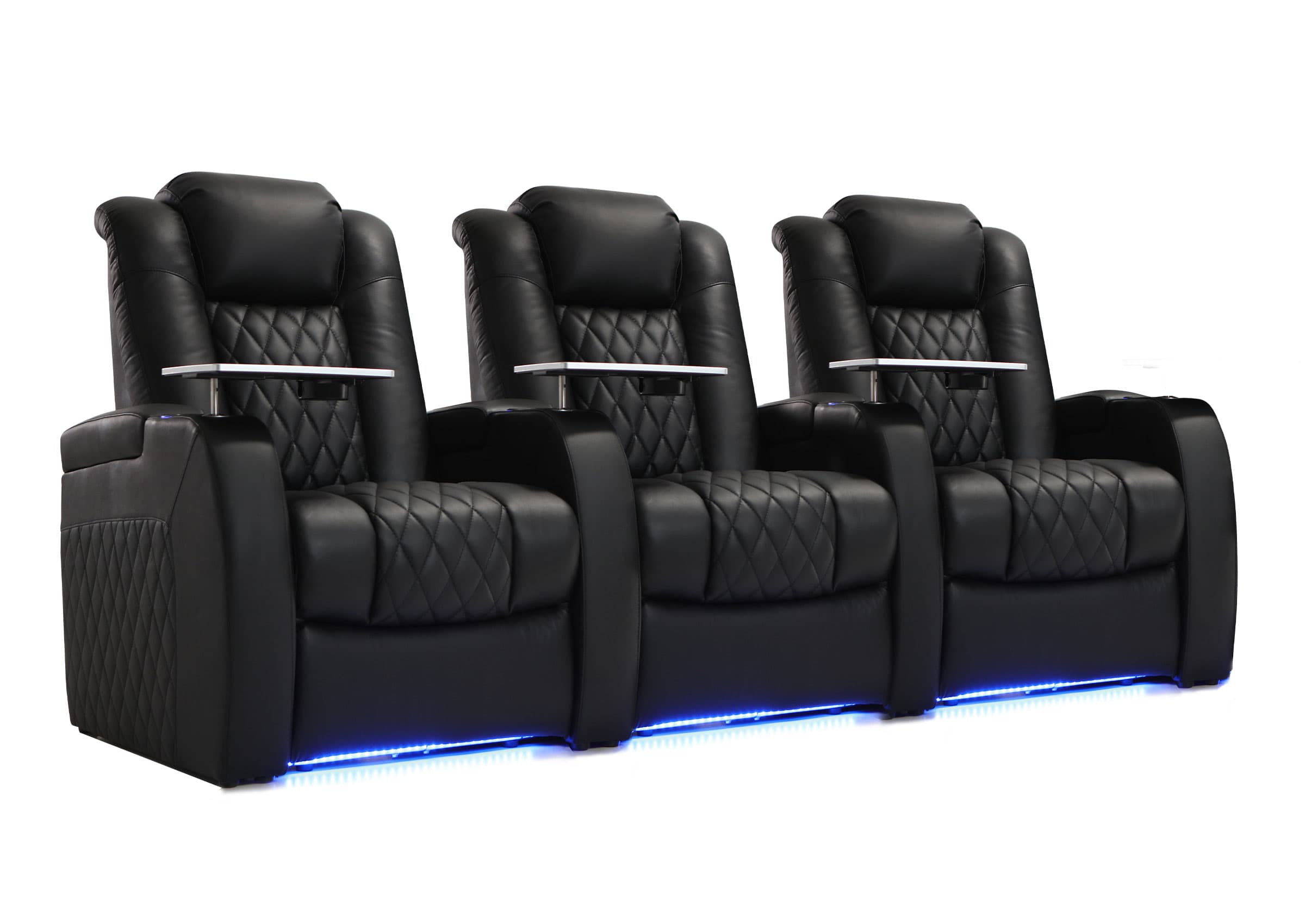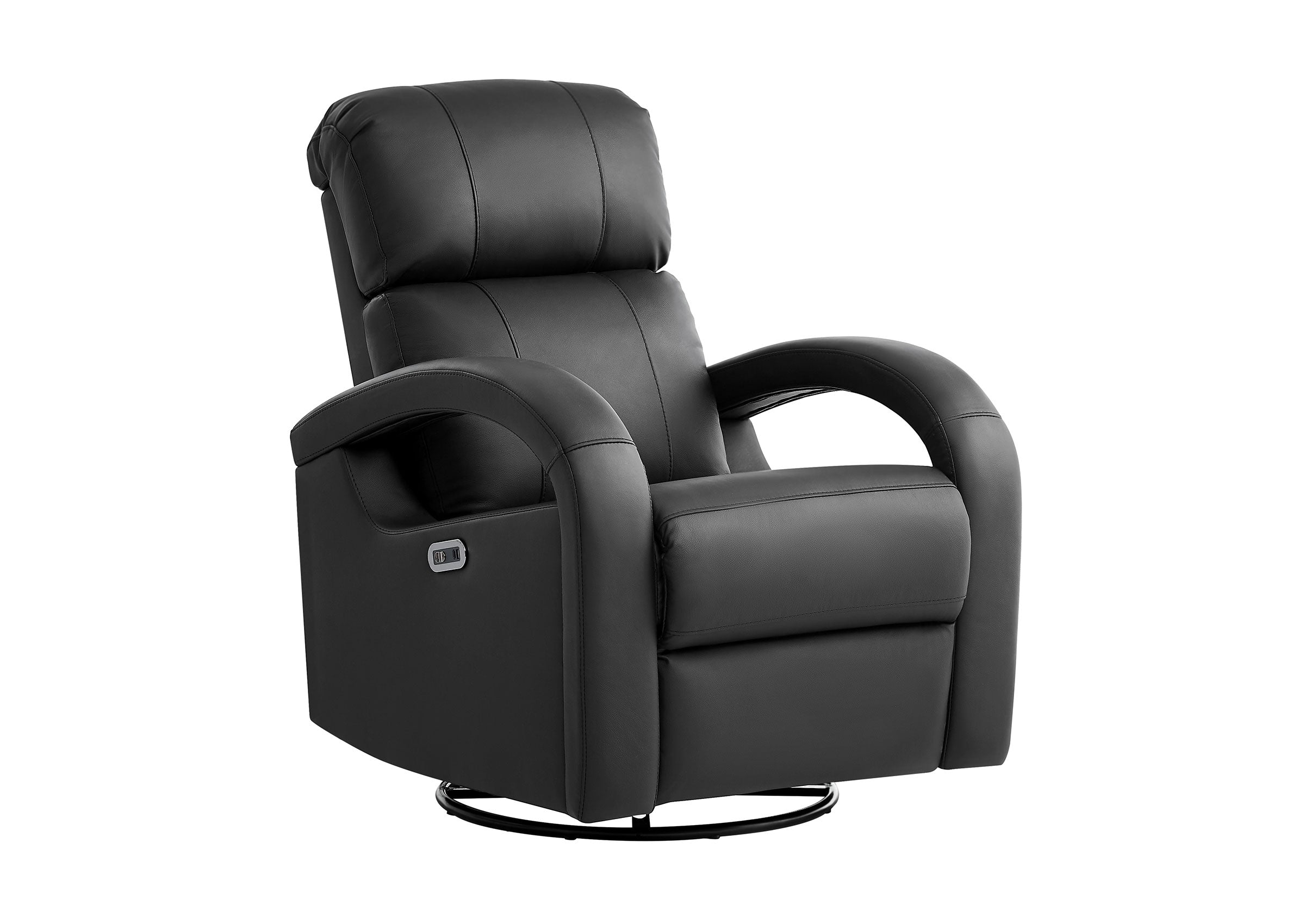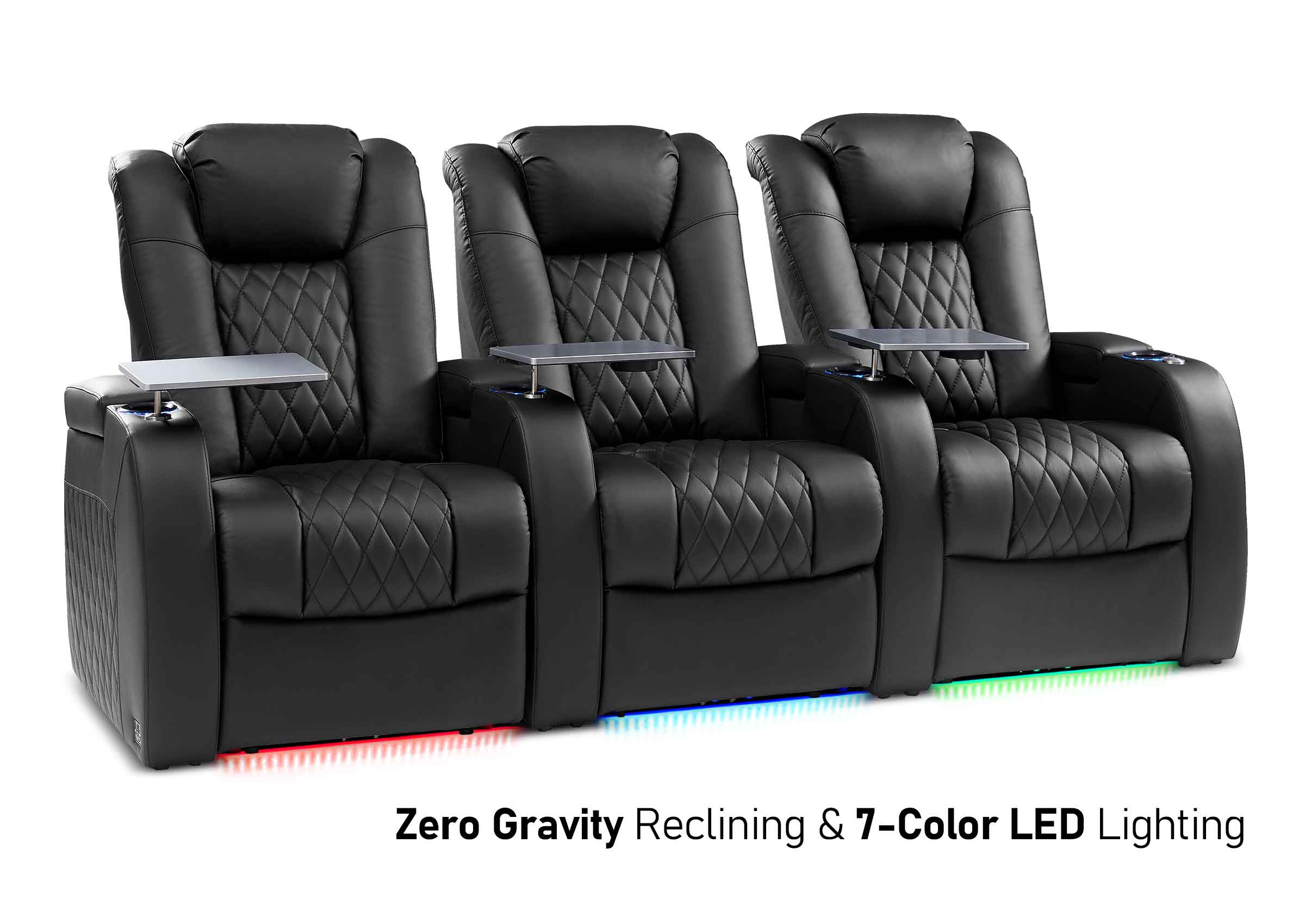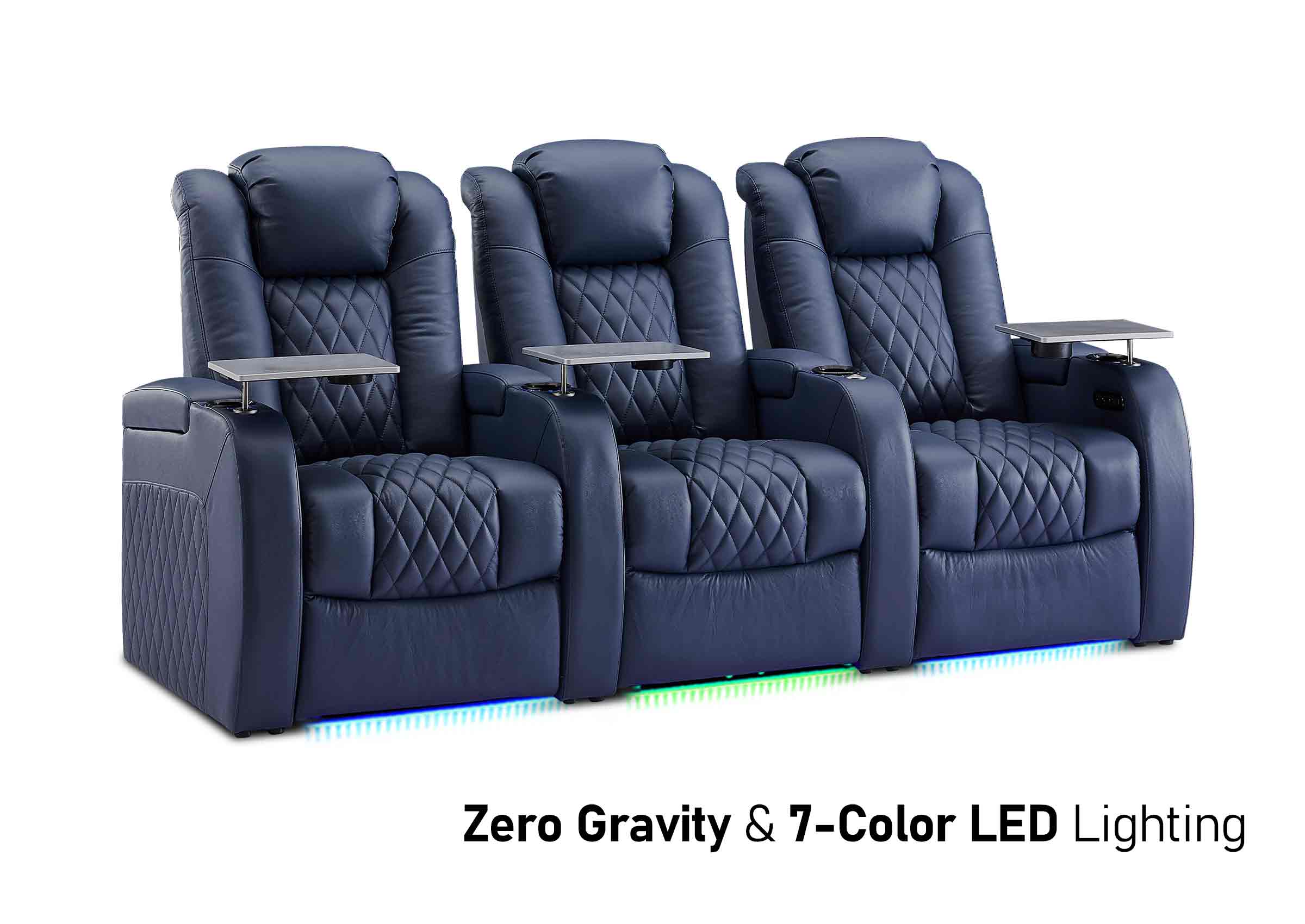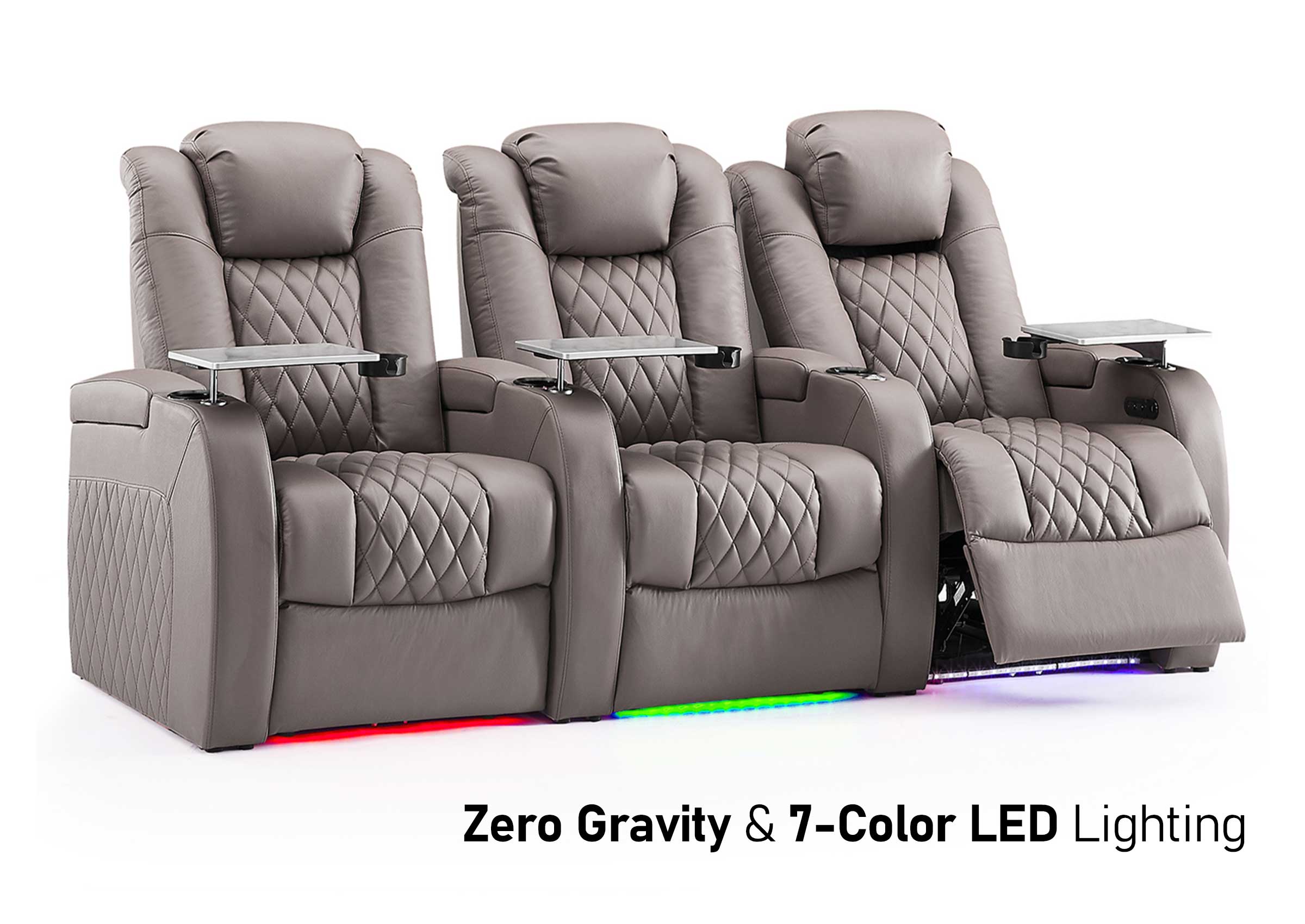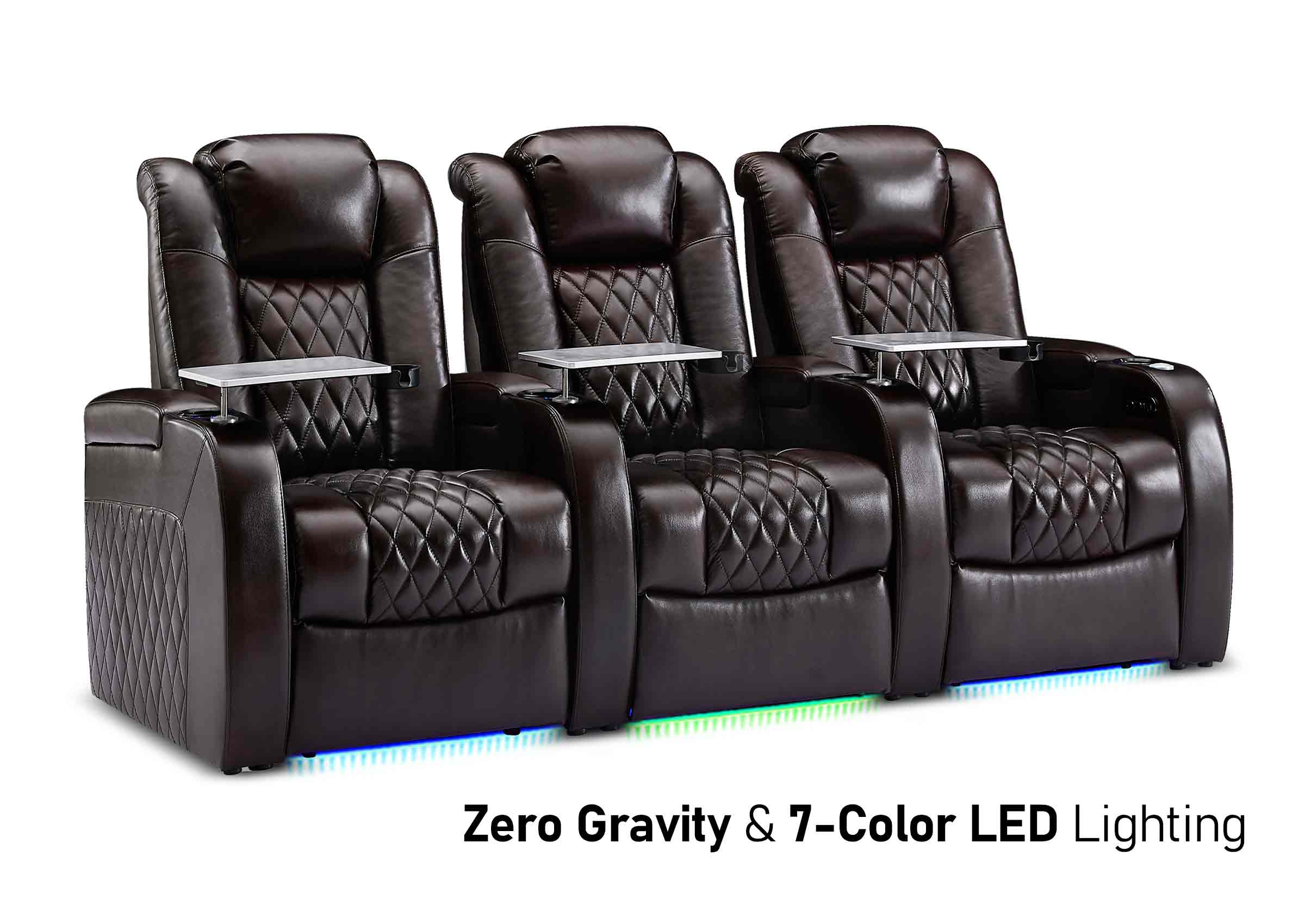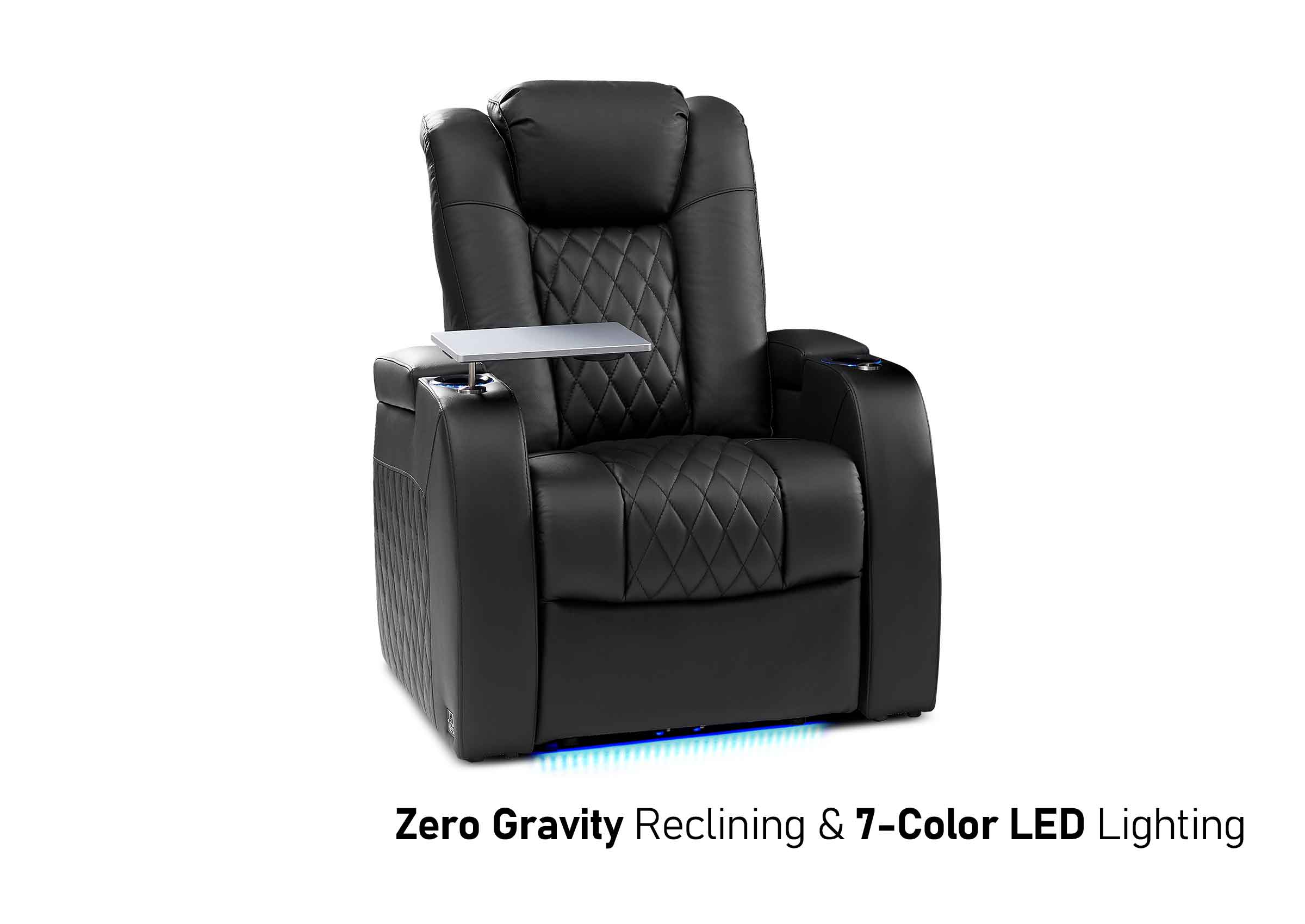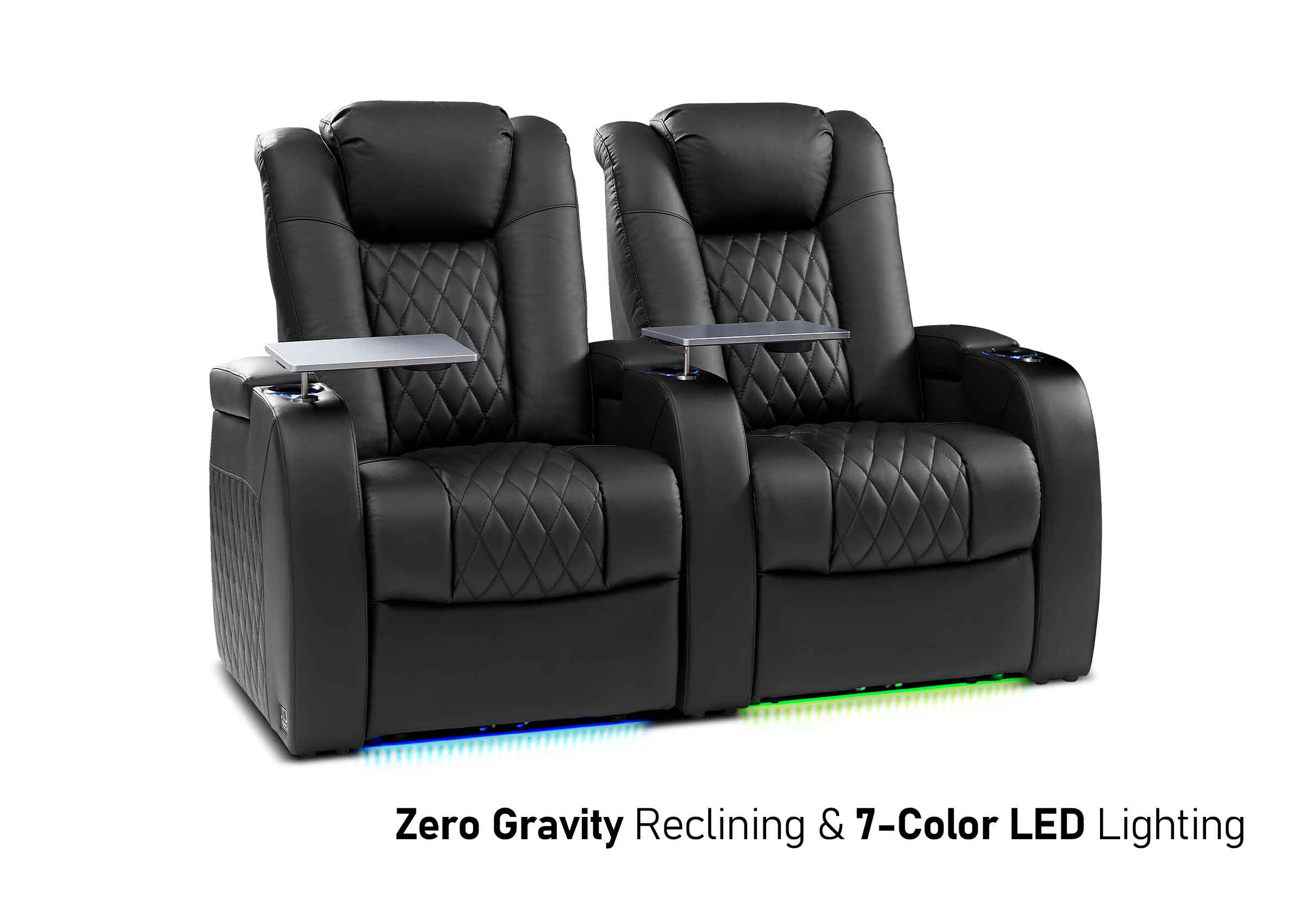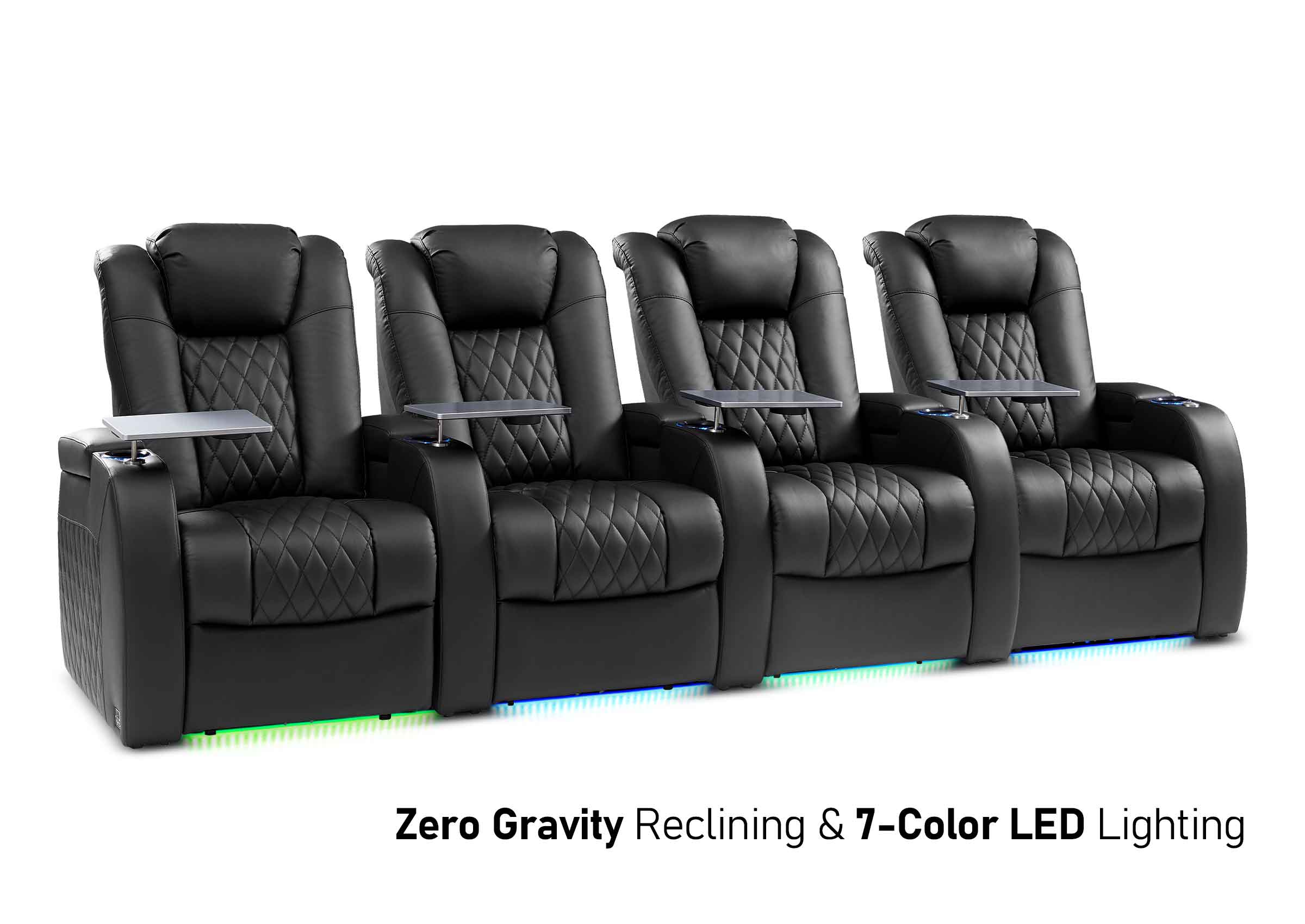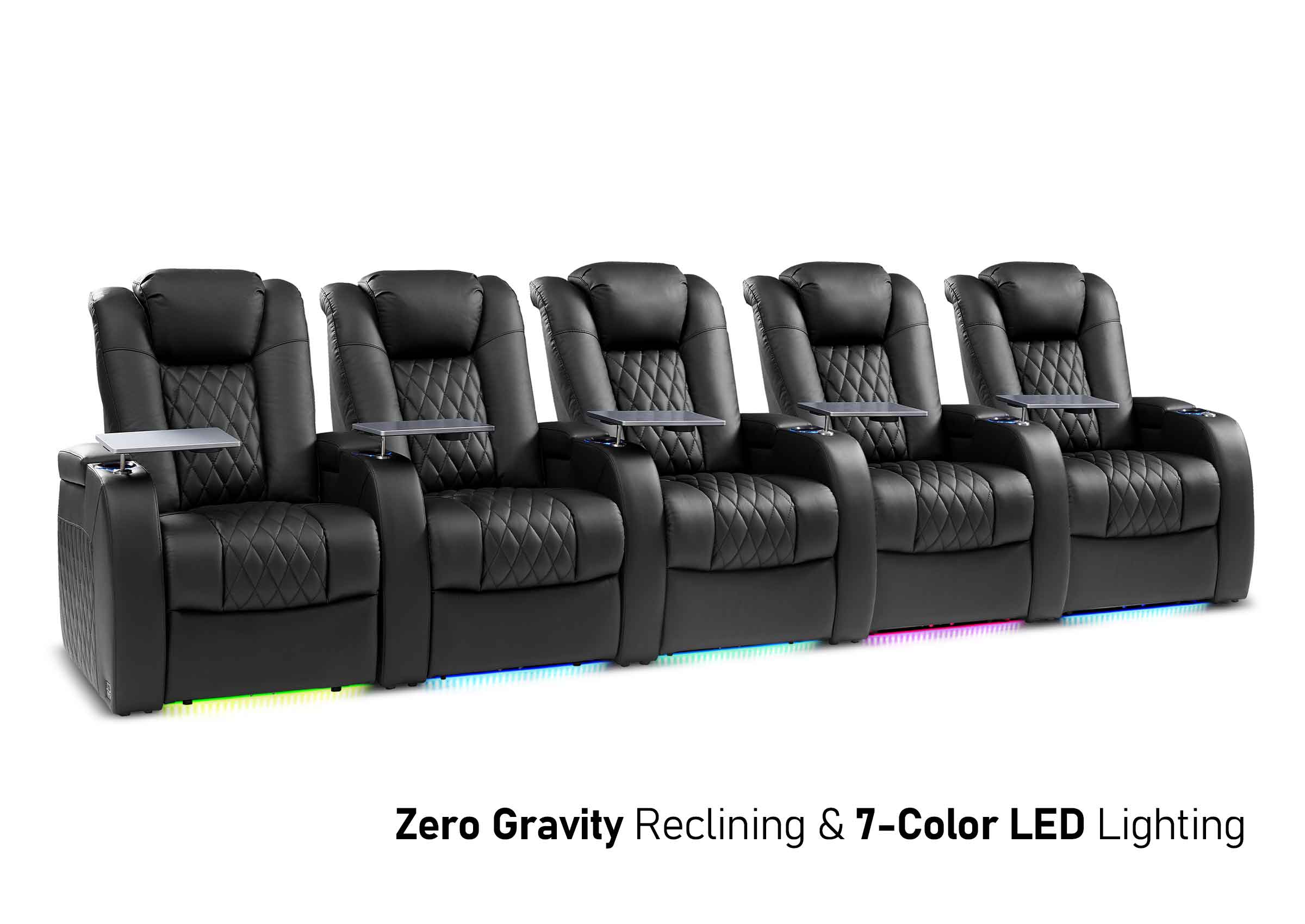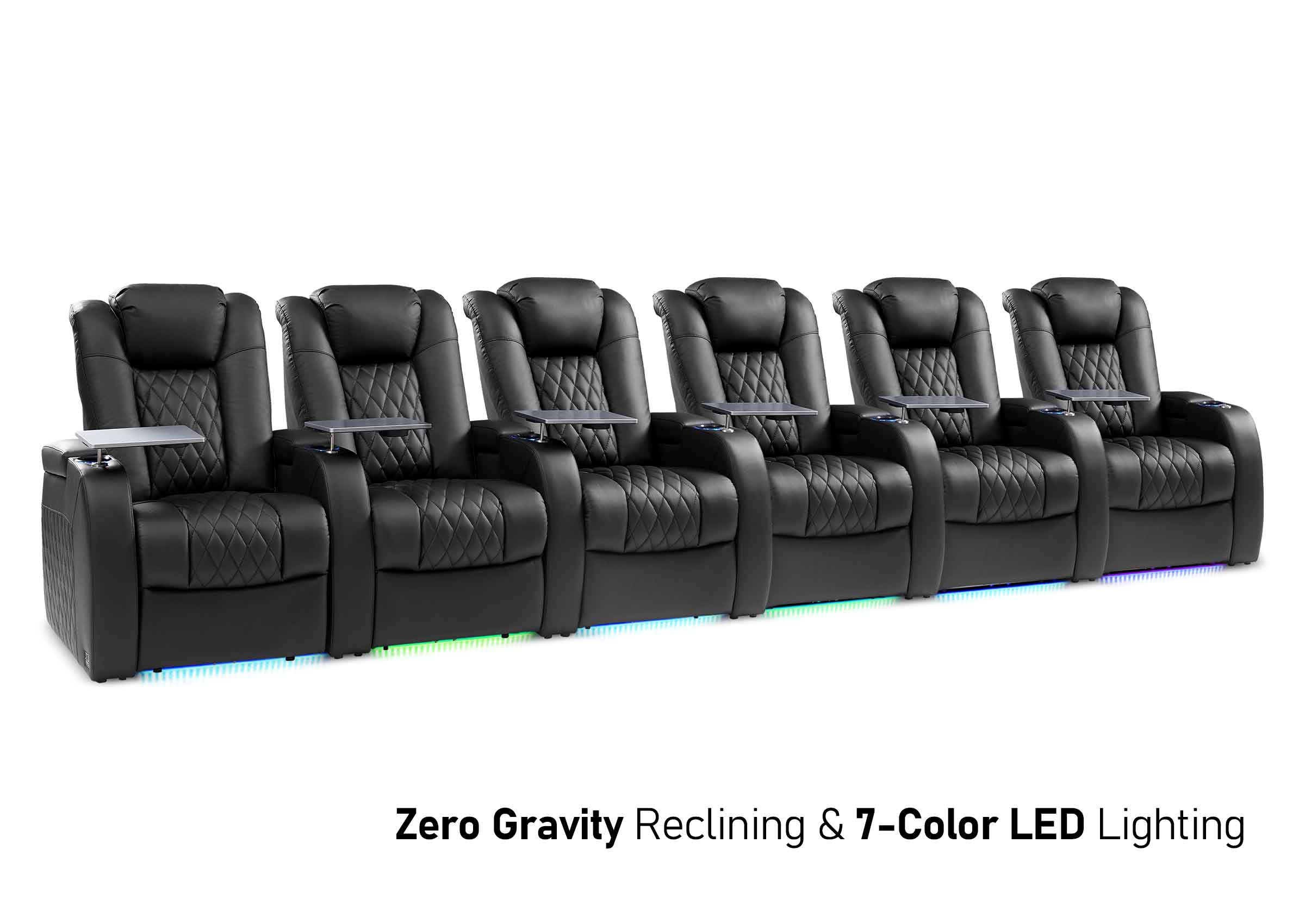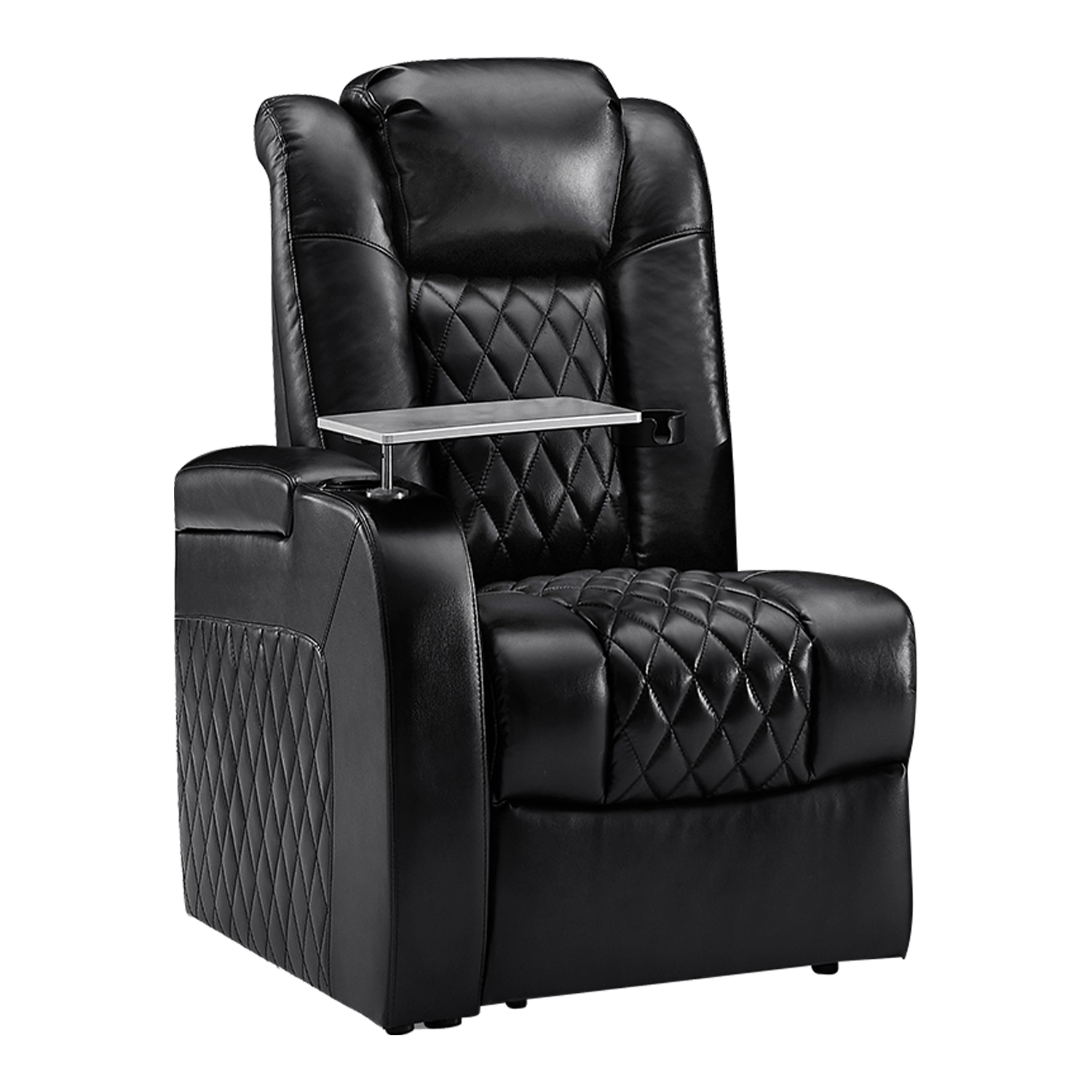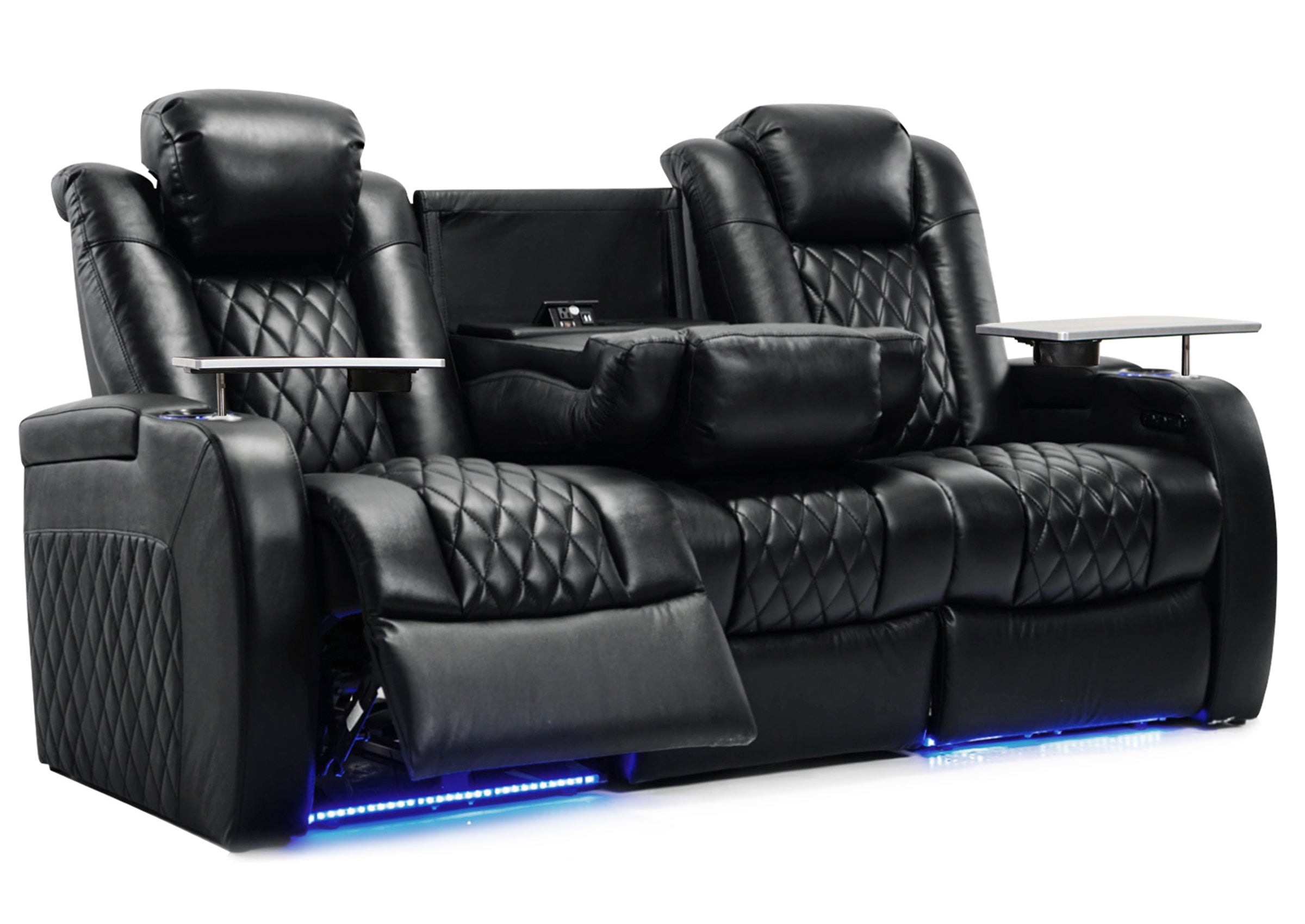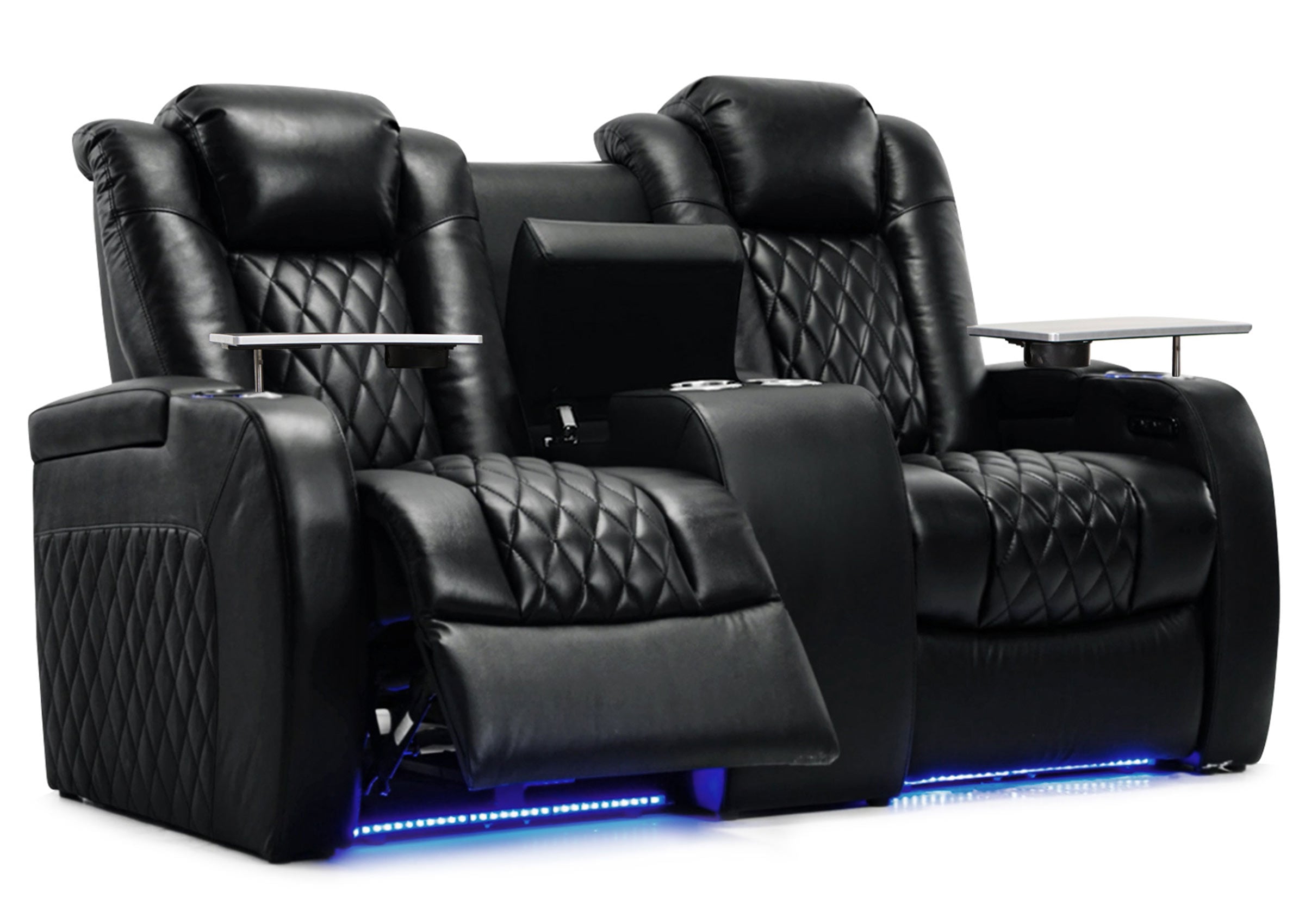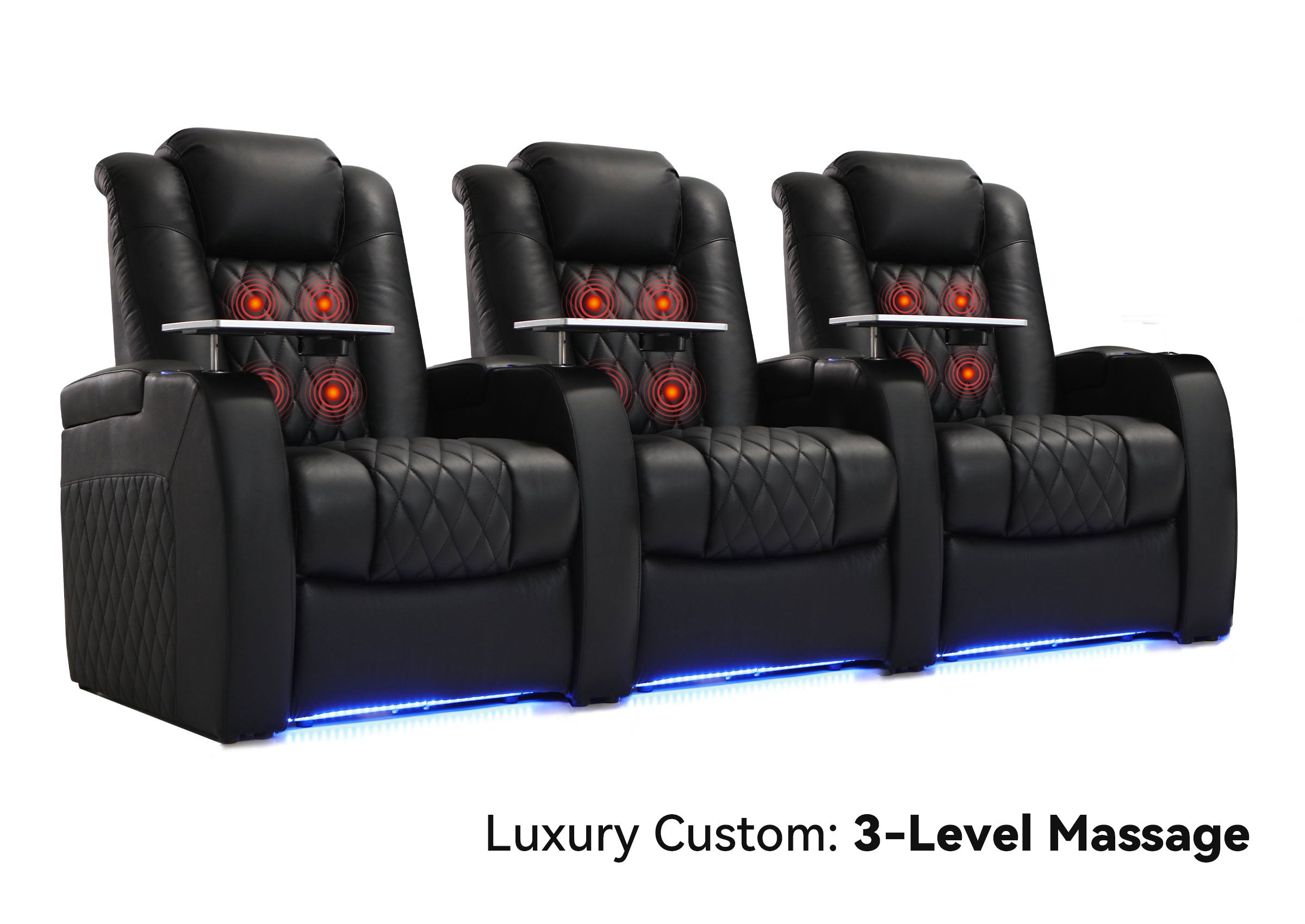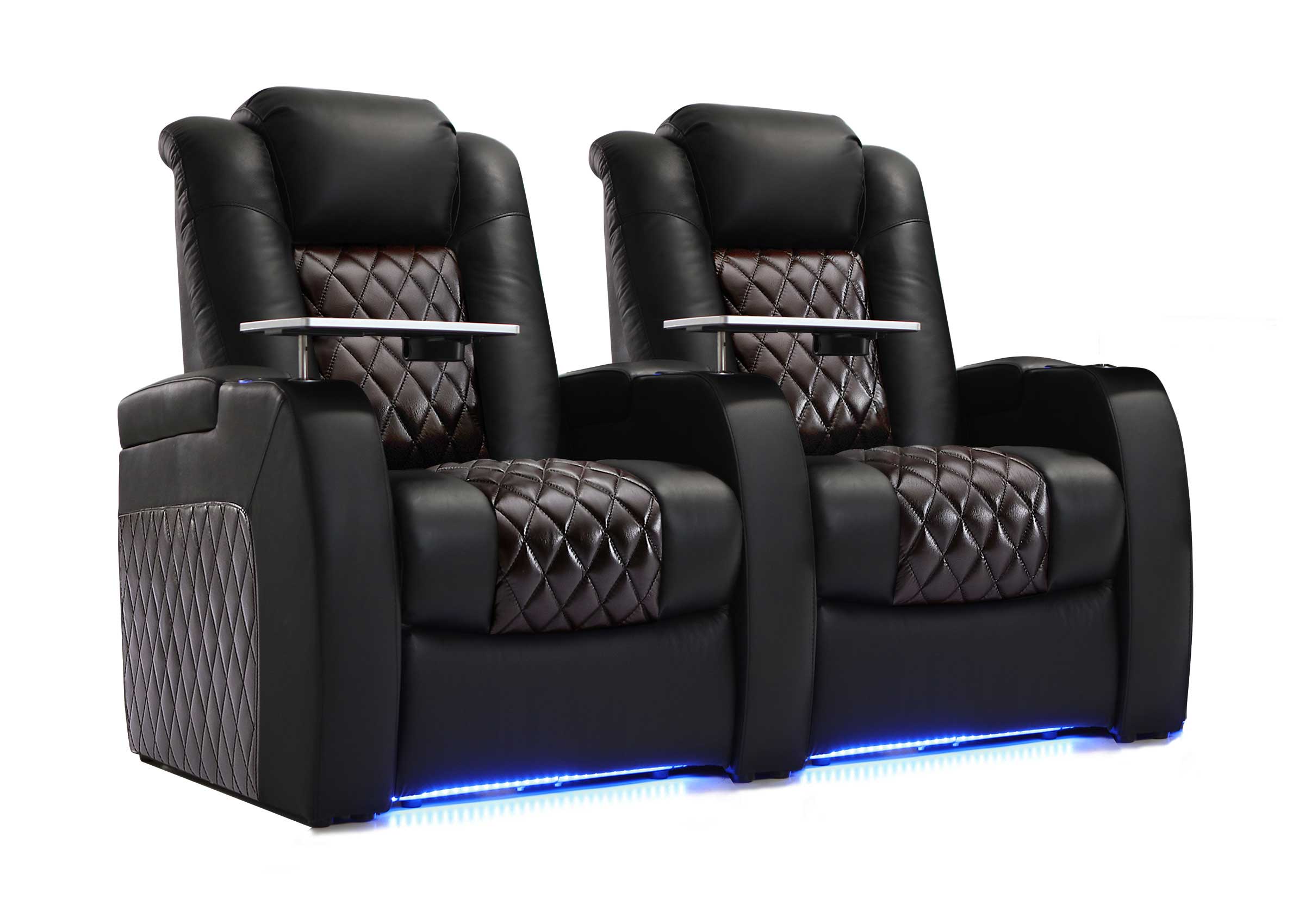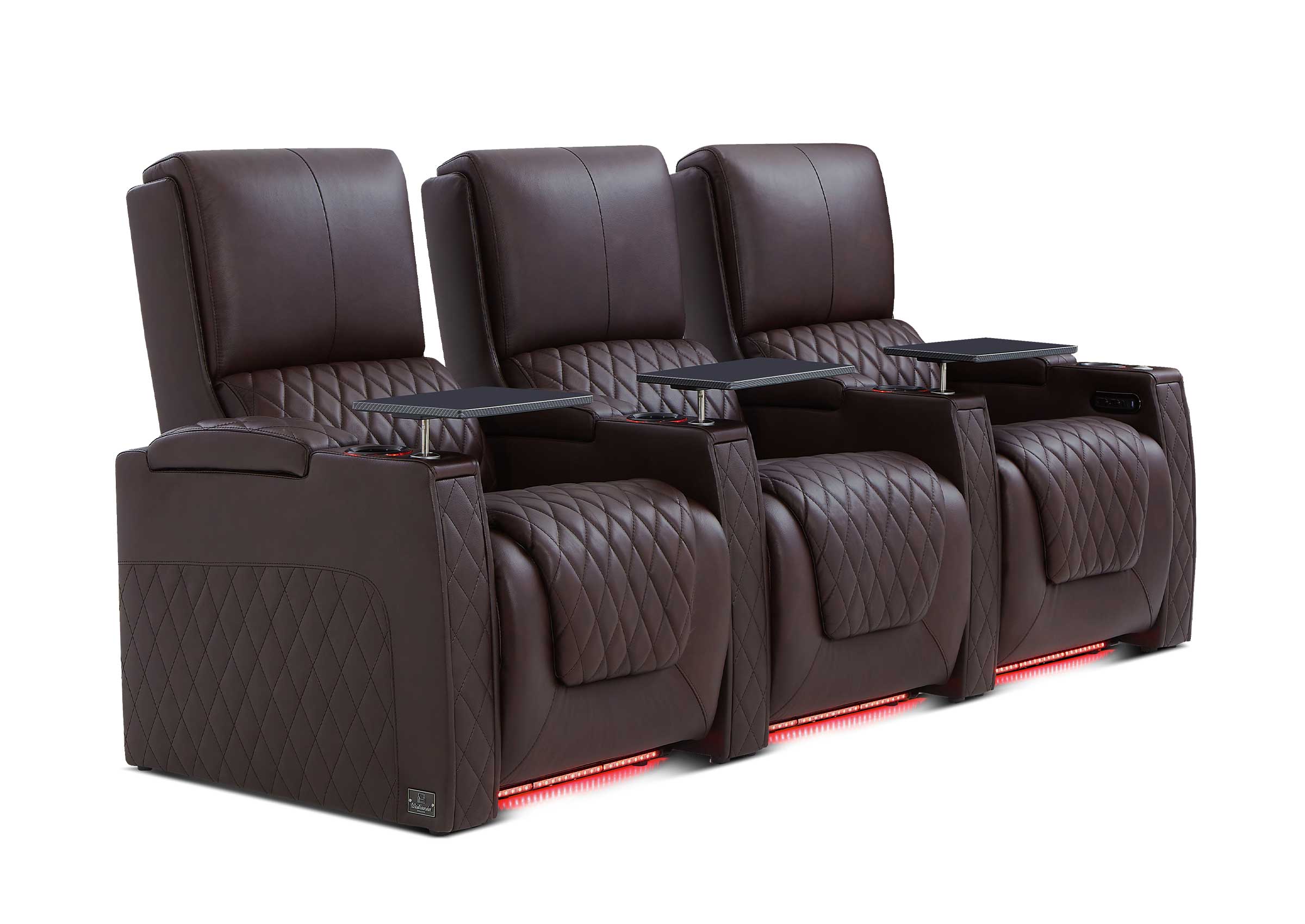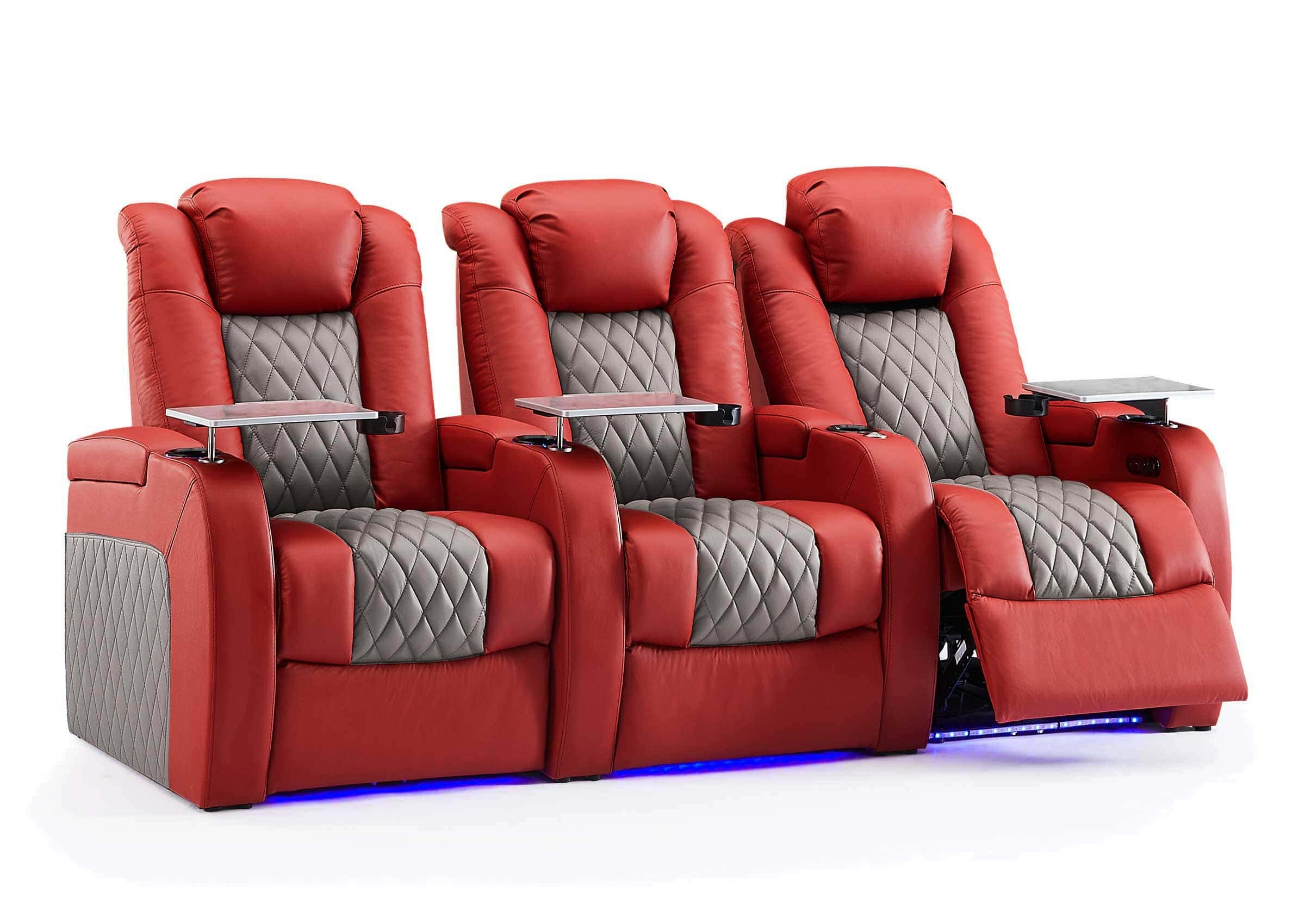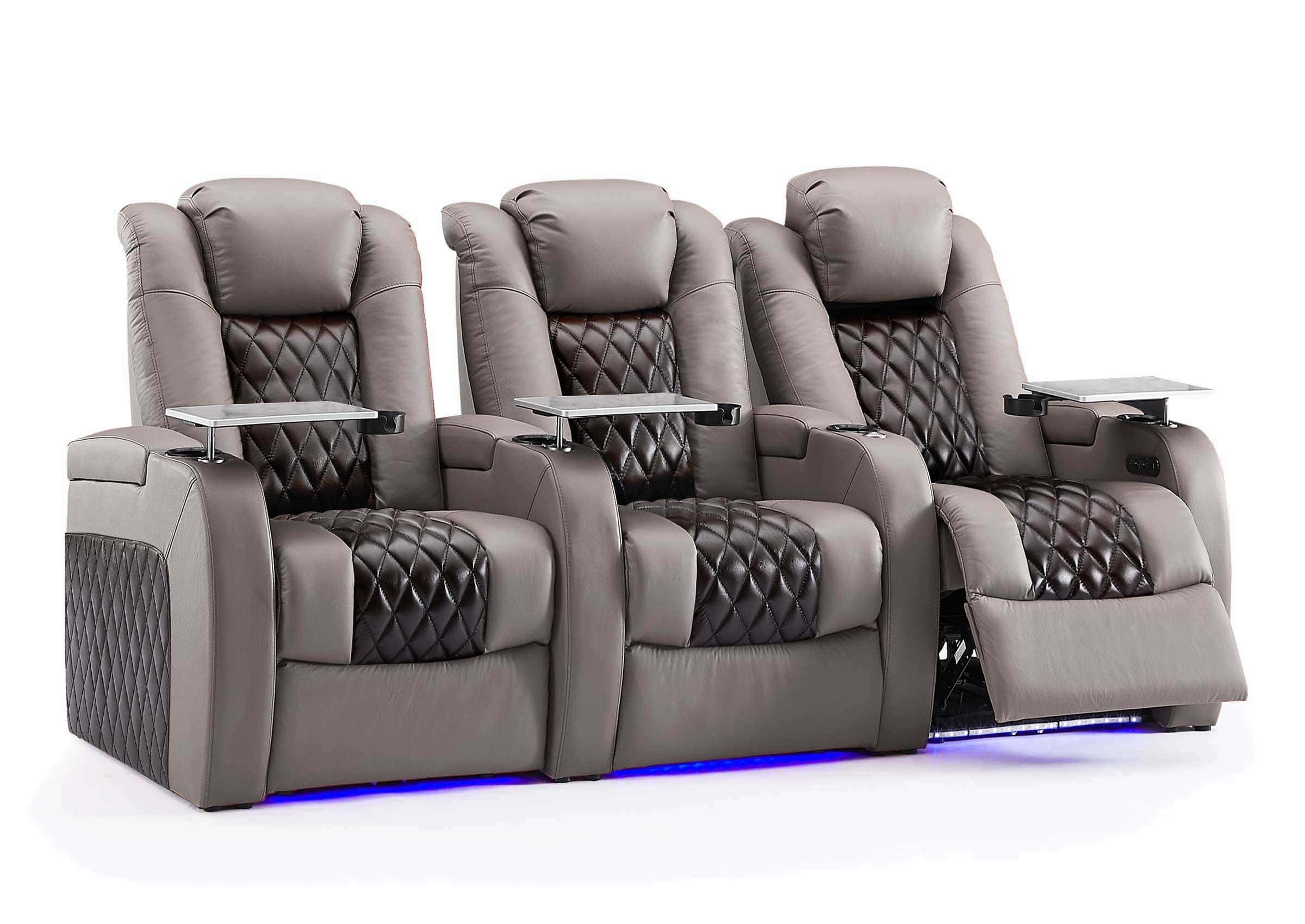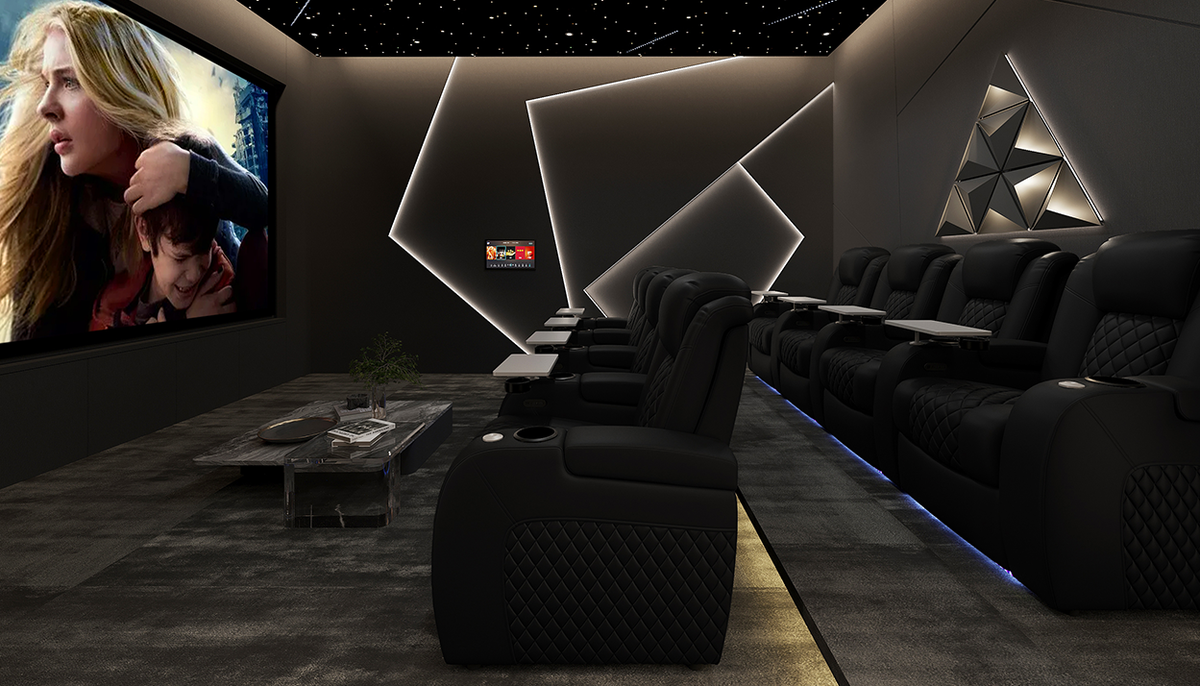Bringing that coveted movie theater experience home may seem daunting with all the technology involved, but this guide simplifies it step-by-step. We'll cover the must-haves for an immersive setup - from choosing the optimal TV or projector for your space and selecting speakers that deliver awesome surround sound, to the ideal source devices for accessing all your favorite content. You'll also get tips on smart media storage solutions, styling your room with cozy theater seating made for hours of bingeing, and how to enhance audio quality through acoustic treatments - everything you need to confidently design your dream home cinema paradise.

Viewing Display: Choosing the Optimal Screen
When setting up your home theater, you'll need to decide between a flat-panel TV or a projector. TVs are easier to install and provide a bright, clear picture even in rooms with some light. They also often have smart features for streaming content.
Projectors offer a true cinema experience with a huge screen size. They can create an authentic theater feel and save space. However, they work best in dark rooms and require precise positioning.
Once you've chosen your display, consider the size and resolution. Choose the largest screen that fits comfortably in your room. For TVs, aim to sit about 1.5 to 2.5 times the screen's diagonal measurement away.
Resolution affects picture clarity. Full HD (1080p) is a good starting point, while 4K and 8K provide incredible sharpness and detail. Make sure your screen's resolution matches your video sources.

Audio System: Recreating Theater-Quality Sounds
When it comes to audio for your home theater, the speakers are what really bring that immersive experience to life. Soundbars are a popular option for simplicity - these sleek bars have multiple speakers built-in and just need to be connected to your TV. While convenient, they don't quite match the impactful surround sound of separate speaker components.
For those looking for the ultimate audio quality, bookshelf speakers or floor-standing tower speakers are the way to go. Bookshelf speakers are compact yet mighty, perfect for smaller home theaters. Floor-standing tower speakers tend to be larger but pack bigger sound drivers for deep, rich bass and striking highs.
To achieve that enveloping, theater-like surround sound, you'll want at minimum a 5.1 speaker configuration. This means five speakers (front left/right, rear left/right, and a center) plus a subwoofer for heart-thumping low frequencies. For even more immersion, 7.1 setups add two more rear surround speakers.
AV Receiver: Controlling the Sights and Sounds
At the heart of any home theater system is the AV receiver. This critical component acts as the hub, connecting all your different audio and video sources while processing and amplifying the signals to your speakers and display. The receiver ensures all your gear can work seamlessly together.
When selecting an AV receiver, pay close attention to the connection options to make sure it can handle all the devices you plan to use - HDMI inputs for video sources, audio inputs/outputs, etc. Compatibility with audio formats, and high-res audio codecs is a must for an immersive listening experience.
You'll also want adequate power output measured in watts to drive however many speakers you have, especially if using larger floor-standing models. Ease of use is important too - look for receivers with auto-calibration, customizable presets, and an intuitive on-screen display.
Don't underestimate the receiver's role. It's the unsung hero allowing all your video and audio components to shine. Choosing the right one with the functionality and muscle to support your full home theater setup is crucial.

Content Sources: Feeding Your Theater with Movies and Shows
For those who still enjoy physical media, a Blu-ray player is a must-have home theater source device. Blu-ray discs provide the highest quality video and audio found on pre-recorded formats. You'll get pristine 4K ultra HD picture quality along with immersive object-based audio.
Most modern Blu-ray players also have internet connectivity and can upscale standard Blu-rays or even DVDs to closer to 4K quality. They let you access streaming services too via integrated apps. Just be sure to get a player that's compatible with any advanced HDR formats you want.
Many of these devices can even handle 4K HDR streaming when paired with a speedy internet connection. The advantage over smart TVs is they tend to receive software updates longer, futureproofing your streaming experience as new tech emerges.
Between Blu-ray discs, streaming boxes/sticks, and potentially even media servers or gaming consoles, you'll have no shortage of ways to feed your home theater with movies, shows, and more.
Media Server and Storage Solutions: Organizing Your Media
A dedicated media server is a great way to manage large digital libraries of movies, TV shows, music, and photos. These devices store, organize, and share your content across your home theater and other devices.
Many media servers have user-friendly software that automatically sorts and catalogs your media, making it easy to browse your entire library with visual thumbnails on your TV screen. Some high-end models can even record and store live TV for later viewing. A single media server can hold your entire entertainment collection using multiple hard drives or SSDs.
To store your digital media library, consider network-attached storage (NAS) devices, which provide centralized storage designed for efficient media serving. External USB hard drives or SSDs are also flexible storage options.
For those with extensive storage needs, setting up a home cloud server using drives or old computer equipment allows you to store as much as you need while keeping your media accessible from anywhere.
Home Theater Seating: Creating the Ultimate Cinema Experience
The perfect seating is essential for enjoying your home theater. Motorized recliners offer effortless adjustment and support, while sectional sofas provide ample space for the whole family to get cozy. For a true cinematic vibe, consider theater-style seats with cup holders and curved rows.
Arrange your seating to ensure an optimal view of the screen for everyone, with enough room to stretch out comfortably. Don't forget to leave adequate aisle space for easy access. Enhance your seating with extras like USB charging ports, adjustable headrests, and ambient lighting.
To complete the experience, treat your room's acoustics for premium audio. Soft furnishings like curtains and rugs absorb excess sound reflections, while strategically placed acoustic panels and bass traps minimize echoes and reverberations for cleaner, crisper sound.

Connectivity: Integrating Your Home Theater Components
To connect your home theater components, you'll need various cables. HDMI cables are crucial for sending high-quality video and audio signals between devices like Blu-ray players, game consoles, streaming boxes, and your TV or projector. Choose cables that support the highest resolutions you plan to use.
Optical digital audio cables or analog RCA cables are used to send audio signals to your receiver and speakers. Don't forget speaker wire to connect your AV receiver to each speaker in your surround sound setup.
With numerous cables connecting your components, proper cable management is essential to avoid a messy tangle of wires. Use cable ties, raceways, or conduits to keep cables neatly bundled and hidden along baseboards or behind walls when possible.
HDMI signal repeaters or wireless HDMI kits can help reduce clutter by allowing you to conceal components in a cabinet while still sending signals to your display. With careful cable routing, you can maintain a clean and organized home theater setup.

Bringing the Cinema Home
At the end of the day, creating an immersive home theater experience is all about finding the right combination of audio and video components to fit your specific space and needs. With the tips provided in this guide, you now have a solid gameplan for choosing the display size and resolution, speaker setup, AV receiver, source devices, media storage, seating arrangements, and room treatments that will let you recreate that authentic cinema feeling. Don't be overwhelmed by all the technology and choices - focus on the elements that matter most to your viewing preferences and budget.








